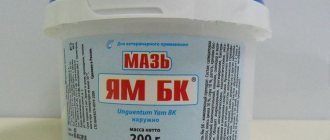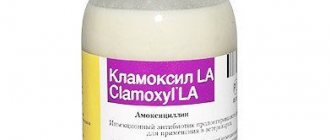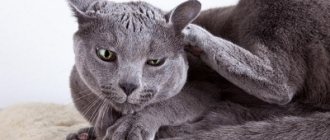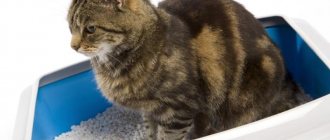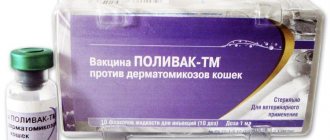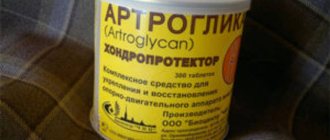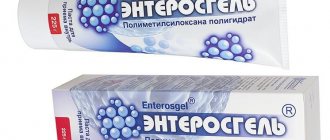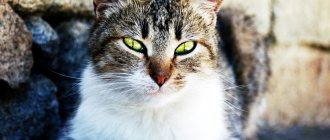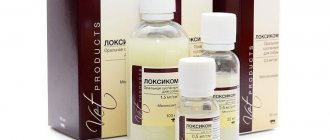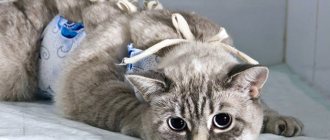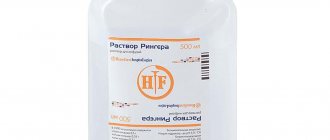Cats, like humans, also suffer from constipation. A story about one of the laxatives - lactusan for cats. How to use it and is it suitable for everyone?
A wonderful prebiotic medicine that can gently and delicately solve the cat litter problem. Constipation occurs depending on many factors, for example, poor or unhealthy diet, lack of fiber, protein or insufficient fluid. The consequence is that bone tissue is poorly digested and the stomach becomes clogged.
Constipation in a cat
At some point the animal cannot go to the toilet, although the desire to visit it remains. The cat, expressing its dissatisfaction, meows loudly, tries to sit down in the tray, takes a comfortable position for itself, and digs for the litter. Nothing further happens. The owner needs to understand at the first such signs (especially if it is time to change the litter, but there is nothing to change) that the cat is constipated.
Constipation can be caused by foreign bodies in the stomach (hairballs, small objects). In the absence of activity or its low level, physical inactivity occurs. A nervous condition or stress, orthopedic or psychological problems can lead to constipation. Another reason is megacolon or inflammation in the intestines. Worms and similar parasites, cancer, neoplasms, scars, polyps provoke disruption of the excretory system.
The pet sometimes does not perceive the purpose of the tray or its location. It happens that you don’t like the filler itself. In such a situation, the act of defecation is absent due to a stressful state. Help is needed in the form of rearranging, changing the toilet or type of filler. The specialist may additionally prescribe antidepressants.
Older cats often develop chronic renal failure or chronic renal failure, the signs of which are not immediately apparent. Only when the disease reaches an acute stage and the pet is seriously ill is this obvious. The kidneys cannot cope with the function of removing toxic substances from the body, and the water-salt balance is disturbed. Owners should also note that when drinking a lot, the cat does not pee much.
When is a laxative necessary?
Having identified symptoms of constipation in a cat, you should not immediately give it laxatives, be it traditional or medicinal. Sometimes this is absolutely not worth doing.
Sometimes the absence of bowel movements is explained by psychological problems or stress. In such cases, laxatives are not needed. The animal must be calmed and a comfortable environment created.
In difficult cases, your pet should be examined by a veterinarian and undergo a course of treatment with antidepressants.
The cat may not accept the tray, the place where it is, or may not tolerate the filler for some reason. In such cases, the reason for the lack of defecation is also in a stressful state, and the animal needs help: change the type of litter, rearrange the tray, sometimes even buy another toilet.
If the cause of constipation is nutritional problems (prolonged fasting, switching to another food, inappropriate food), then the pet needs a diet.
You should consult your veterinarian on what to feed your cat. In such cases, folk remedies can be used for relief.
Medicines should not be given without a doctor’s prescription, especially if they are intended for humans. In some cases, you can use medications, for example, if the animal has undergone castration or sterilization surgery, the veterinarian will tell you about the appropriate ones.
If the cat does not go to the toilet for more than three days and experiences noticeable discomfort, it can also be helped with medication.
In other cases, if blood or mucous inclusions are found in the pet’s stool, then no medications should be given. There is also no need to give a laxative if constipation is caused by intestinal obstruction due to a foreign body.
In such cases, you can do an enema; this method will help to quickly cleanse the rectum and slightly alleviate the cat’s condition. However, you need to show the animal to a doctor as soon as possible.
Remedy for constipation
Constipation is very dangerous for an animal's health. Lactusan is an inexpensive and very effective remedy, practically safe and suitable for all age groups of animals. It can be purchased at any veterinary pharmacy. The price will be about 150 rubles. for a 100 ml bottle.
- The principle of action of the drug is as follows. As a result of the use of lactusan, irritation of the mechanical and chemical nature of the mucous tissues of the gastrointestinal tract occurs. As a result, moisture is not absorbed into the intestines. The feces become liquid and freely leave the animal’s body.
- Lactusan is produced in the form of syrup, suspension or tablets. The main active substance is lactulose, its effect is to create beneficial microflora, auxiliary ones are galactose (with the function of treating dysbacteriosis), citric acid.
- Contraindications include individual intolerance to the components, lactose intolerance, galactosemia, intestinal obstruction. Side effects associated with exceeding the recommended norm include vomiting, increased gas formation, and diarrhea.
It is advisable to consult a veterinarian about the choice of medication; he will calculate the dosage, the number of doses, and the duration of the course. Leave him recommendations for prevention. If Lactusan is prescribed, but the specialist has not said anything, follow the instructions for use, it is always in the package.
The instructions indicate that treatment of chronic renal failure with lactusan is carried out (unless the specialist has prescribed otherwise) in a dosage for 1 dose - 2-3 ml of the drug. The positive effect of the drug is the prevention of putrefactive processes in the pet’s body, reducing ammonia levels. Normal microflora is created and the blood is cleansed. Toxins and waste products leave the body through the intestines. Kidney function is supported, creatinine and urea levels are reduced.
Be sure to take the drug after meals. Dosage – 3 ml or 0.5 ml per kilogram of weight. You need to take it 1-2 times a day. The drug is effective on the 3rd day of use. Along with the medication, a proper diet is also necessary. The pet is provided with a comfortable and calm state.
Reviews for the medicine are positive:
- “I always keep lactusan in my medicine cabinet, it’s useful since it’s called a prebiotic.”
- “The cat was poisoned by anthelmintic and suffered from constipation for three days. On the advice of the veterinary forum, they gave Lactusan. It didn’t help immediately, but only after 6 hours. The cat began to have diarrhea, it seems that the dosage was followed.”
- “Removes toxins, normalizes microflora and stool, solves problems with the gastrointestinal tract, there are cheaper prebiotics, but Busya did not swallow them. And Lactusan, surprisingly, came in. And then they gave me the course without any problems.”
- “Someone tortures an animal by stuffing it with Vaseline oil, condensed milk, and soap solution for constipation. I shouldn't go to the vet, which is what I did. Lactusan, which was prescribed there, helped normally.”
Due to its slow action, Lactusan is not suitable for emergency use.
Preventive measures will solve the problem of constipation. By taking your cat to the veterinarian once a year, you will be able to recognize the disease at an early stage, which will determine further treatment.
How to help a cat at home?
Lactusan is stored protected from light at temperatures up to 20°C for two years. Do not leave the medicine within the reach of children.
If for certain reasons constipation in a pet occurs periodically, then, first of all, you need to learn how to cope with constipation at home. To begin with, you need to pay attention to the following drugs: Vaseline oil, Duphalac, Lactusan. These drugs help soften stool and make it easier to pass through the rectum. The use of castor oil for these purposes is undesirable, as it often leads to significant pain in the cat.
Vaseline oil is given to animals orally several times a day. The dosage is selected individually, taking into account the weight of the pet; it is advisable to consult a doctor about this. But if this is not possible, then you need to start with a minimum dosage of 6 ml and look at the results. An adult cat weighing approximately 7 kg needs approximately 50-60 ml of Vaseline oil.
It is best to give the oil on an empty stomach, as there is a high probability that after eating the food, the cat will vomit from this procedure. The oil must be drawn into a syringe (without a needle, of course) and poured into the cat’s mouth with a confident and quick movement, trying to hold the syringe slightly to the side so that the oil goes straight into the throat, bypassing the tongue.
We suggest you read: Worms in the eyes of cats, causes, routes of penetration, treatment and prevention
Most often, difficult defecation (or its complete absence) is treated with the help of therapeutic drugs that soften the stool. For example,
"Lactusan." This product belongs to the class of prebiotics and is a source of lactulose. The drug restores beneficial microflora in the intestines, while simultaneously protecting the body from toxins, inhibiting pathogenic ones.
In addition to it, Duphalac laxative for cats is often used. This drug also contains lactulose. It stimulates peristalsis and is gentle. The drug "Duphalac" works a few days after administration. This is explained by the fact that this laxative passes through the gastrointestinal tract, reduces the concentration of ammonium ions in the blood by more than 30%, and inhibits the absorption of toxins in the intestines.
Lactusan, Duphalac and other medications that contain lactulose are given to the animal orally several times a day. The dosage is chosen taking into account the weight of the animal (0.5 ml per kilogram of total weight); for an adult cat, the dose is usually 2.1–2.6 ml. Other laxatives must be prescribed by a doctor and used strictly according to the instructions.
Another effective drug is Prelax children's syrup. It also contains lactulose and makes it possible to solve the problem of constipation in cats. The
, so cats eat it with pleasure. The syrup can be mixed with dry food.
Sodium Picosulfate is also considered an effective drug, but its use must be agreed with a veterinarian, since only he can correctly determine the dosage and frequency of use in a particular case.
There is another drug that is recommended for relieving constipation - magnesium sulfate. To use it, you need to dilute half a sachet in water and give it to your cat. Not all animals calmly use this remedy, since it is quite bitter. It is necessary to draw up the solution with a syringe and carefully pour it into the animal’s mouth. The drug instantly relieves pain in the pet, and after about 6 hours, the laxative begins to take effect.
You can try to cope with constipation using traditional methods, for example, diluted condensed milk with raw water. This mixture has an effect similar to castor oil - it normalizes the emptying of the animal’s rectum and softens the stool. Microenemas with a solution of a drug that contains lactulose, for example, Lactusan, are also useful. These enemas can help your pet deal with constipation on its own.
In particularly difficult cases, when there are obvious signs of intoxication of the body, and it is not possible to overcome constipation at home,
. But for this you need to contact an animal clinic, since this is a rather complex rinsing of the rectum; this cleansing may require more than 7 liters of water.
Prevention of constipation in cats does not require much effort, and, as a rule, comes down to the following:
- Periodically give your pet cleansing phytomins for hair removal; they can be purchased at veterinary pharmacies or pet stores. These are drugs that contain lecithin, are usually prepared in the form of tablets or pastes and are used for prevention purposes, as well as to remove the consequences of acute constipation. Most often, in addition to lecithin, phytomins contain herbal extracts that normalize the gastrointestinal tract and relieve inflammation. Phytomines must be used in accordance with the instructions on the package.
- Brush your cat periodically to help it get rid of excess hair. Moreover, this applies to long-haired breeds of cats; they more often than others suffer from the accumulation of tufts of fur in the stomach.
- Provide your cat with constant access to fresh drinking water, especially when the animal’s diet includes dry food.
- Make sure your cat's daily menu contains the required amount of plant fiber and protein. You can use steamed oat or wheat bran as fiber at the rate of one tablespoon per day. A cat's menu must include stewed or boiled vegetables, as well as cereal porridge. When your cat does not refuse to eat pumpkin, it will be an excellent laxative for the cat: one tablespoon of boiled pumpkin daily, added to any dish, can help cope with constant physiological constipation.
- Do not neglect periodic examinations of the animal by a doctor, this can help in a timely manner to prevent illness, which may result in constipation.
- Movement is another very important factor that helps prevent constipation and improve intestinal motility in the animal. If the cat is not free to roam outside, then purchase special exercise equipment or toys for it, they will help the animal move more.
This, perhaps, is the most important thing about such an unpleasant illness as constipation in cats. Let these simple tips and tricks, as well as love and attention to your pet, help you keep your four-legged friend healthy and vigorous.
How does constipation manifest in cats?
Constipation in cats is a condition characterized by prolonged retention of feces in the intestines. It is always accompanied by difficult or absent bowel movements. On average, a healthy cat visits the litter box for “big business” once a day, a growing cat with a faster metabolism twice a day, and an older cat once every two days. When cats have stool retention for 3 days, measures should be taken.
Additionally, constipation is accompanied by the following symptoms:
- obvious difficulties and pain in the cat when trying to recover;
- bloating due to gas retention;
- vomiting (sometimes);
- general depressed state, lethargy;
- anorexia (the animal does not eat or drink water);
- slightly swollen anal area;
- altered stool character: excrement looks dry, even cracked, sometimes with a small amount of liquid feces, foreign matter and an admixture of fresh blood on its surface.
A cat's lack of stool for three days requires intervention.
Causes of constipation in cats
The causes of constipation can be caused by two groups of factors:
- external - diet, maintenance features;
- internal - when constipation is a symptom of any cat disease.
External factors that provoke the development of constipation are as follows:
- deficiency of fiber as the main ballast substance in the cat’s diet;
- overeating or feeding the cat in too small portions, for example, for weight loss - in both cases, the passage of food through the intestines is disrupted;
- lack of free access to drinking water, especially when using dry food;
- obesity, lack of physical activity;
- getting a large amount of hair into the cat’s intestines during self-licking, especially during shedding;
- the use of certain medications (long-term or in high doses) - iron, astringents, antispasmodics, anticholinergics, antihistamines;
- ingestion of bones, toys;
- the presence of roughage in the cat’s diet - meat bones, a large amount of cartilage;
- stress - moving, change of owner, appearance of another pet;
- undergone surgery.
Constipation may occur in a cat if there are the following diseases:
- chronic renal failure;
- helminthic infestations;
- diabetes mellitus;
- intestinal tumors;
- injuries of the spine and pelvic area;
- neurological diseases;
- megacolon - a congenital pathology of the large intestine (expansion and elongation), leading to disruption of the movement of food through the intestines and retention of fecal matter;
- prostate cysts or neoplasms;
- various pathologies of the liver and pancreas, chronic colitis and gastritis and other diseases.
The use of a laxative is necessary both to combat constipation and to prevent its consequences
Under the guise of simple constipation, an acute surgical condition may be hidden, for example, intestinal obstruction, formed by blocking the intestinal lumen with a tumor or foreign body. Its manifestations:
- the cat is restless, tries to take a forced position, wants to drink, but at the same time refuses to eat;
- the stomach is usually tense, swollen and painful;
- vomiting is possible, sometimes with blood, as well as the appearance of liquid bloody discharge from the anus;
- increased body temperature;
- shallow breathing of the cat, rapid pulse.
If constipation is accompanied by the symptoms described above, it is necessary to exclude the development of acute surgical pathology. In this case, you should not give the cat a laxative, nor should you feed and water it until examined by a doctor.
Symptoms of constipation
Normally, a domestic cat defecates daily, usually at about the same time.
However, some animals have bowel movements less frequently; this varies from person to person. Loving and caring owners always pay attention to the condition of the cat's litter box in order to promptly clean up after their pet. In cases where the intestines do not empty, the feces lose water, become hard, and cause significant discomfort to the animal. In addition, excrement is something that the body does not need, it eliminates it, and if bowel movements do not occur, toxins from stagnant feces begin to spread throughout the body.
Constipation can be recognized by the following symptoms:
- the tray is clean for more than two days;
- a cat can dig around for a long time, sit down in the tray, sit for a long time, but without results;
- it is noticeable that the animal is tense, straining, and sometimes makes plaintive sounds;
- The cat sometimes does not go to the litter box, tries to sit somewhere in the corner, but does not leave excrement.
Sometimes, if the cause of constipation is a pathological process, the cat may have additional symptoms. The animal may vomit and vomit; it meows pitifully, trying to communicate unpleasant symptoms and pain. The cat becomes lethargic and inactive. The temperature may rise, the stomach becomes tense, and it is impossible to touch it (cats, even under normal conditions, do not really like touching the stomach, but when sick they can react aggressively to attempts to touch it).
A small amount of stool containing blood or mucus may appear. Sometimes only mucus or blood comes out of the anus. This is a serious symptom that requires immediate contact with a veterinarian.
Consequences of long-term and chronic constipation
Constipation that persists for more than three days can cause the following consequences:
- development of general intoxication;
- dysfunction of internal organs, especially the liver and kidneys;
- rupture of the intestine with the development of peritonitis;
- increased load on the heart.
Consequences characteristic of chronic constipation:
- development of imbalance of intestinal microflora (predominance of putrefactive bacteria), secondary colitis;
- disruption of the synthesis of certain vitamins: B12, biotin, folic acid;
- deterioration in the condition of the coat - the coat becomes dull and may fall out;
- increased load on liver and kidney function due to toxic nitrogenous compounds released by putrefactive bacteria;
- proctitis, paraproctitis, rectal fissure;
- acquired megacolon;
- the development of malignant neoplasms of the large intestine is the most serious consequence.
The occurrence of complications significantly worsens the course and prognosis of the disease.
Helping a cat with constipation
In most cases, it is possible to eliminate constipation in a cat by using laxatives. You can treat your pet yourself when the cause of constipation is obvious. In all other situations, especially if the cat has other diseases and is already receiving drug therapy, you should consult a veterinarian. For example, you cannot give a laxative to an animal with chronic renal failure and dehydration: first, a drip is prescribed to eliminate fluid deficiency in the body.
Pharmacy laxatives
The following medications are used to treat a cat for constipation:
- Based on lactulose.
In a regular pharmacy you can buy laxatives Duphalac, Lactusan, Prelax and others, in a veterinary - Vetelakt. Lactulose-based products are distinguished by their mild action and high safety. All of them contain lactobacilli, therefore, they are prebiotics - they thin the stool and increase its volume. They are also suitable for use for chronic constipation. Lactulose-based laxatives are used to treat constipation in cats. - Based on sodium picosulfate (Guttalax, Laxigal, Slabilen and others) and magnesium sulfate (an emergency remedy for severe constipation).
They actively stimulate peristalsis and cause noticeable cramping pain in the cat’s abdomen. Exceeding their dosage is fraught with the development of dehydration: they greatly dilute feces, sometimes the cat does not have time to reach the tray. Laxatives of this group are prescribed by a veterinarian taking into account the general clinical picture. Laxatives based on sodium picosulfate and magnesium sulfate are quite strong drugs that are prescribed by a veterinarian
Table: overview of pharmaceutical laxatives
| A drug | Lactusan | Duphalac | Prelax | Vetelakt | Guttalax | Laxigal | Weak | Magnesium sulfate |
| Compound | At least 55% dry matter, of which:
| Lactulose - 66.7 g/ml. |
|
| Sodium picosulfate monohydrate per 100 ml - 0.75 g. | Sodium picosulfate - 7.5 mg per 1 ml. | Sodium picosulfate - 7.5 mg per 1 ml. | 100% magnesium sulfate. |
| Release form |
|
| Syrup in bottles of 1000, 400, 220, 100 ml. |
| Drops for oral administration 15 or 30 ml. | Drops for oral administration in bottles of 10 or 25 ml. | Drops for oral administration in bottles of 15 or 30 ml. | Packets of powder for preparing a solution for oral administration, 10, 20 or 25 g each. |
| Mechanism of action |
The effect occurs within 2–3 days. | Under the influence of intestinal microflora, an active substance is released, stimulating the receptors of the intestinal mucosa and causing increased peristalsis. The effect occurs within 6–12 hours. |
The onset of action is 0.5–3 hours, duration is 4–6 hours. | |||||
| Indications |
|
|
| |||||
| Contraindications |
|
|
| |||||
| Dosing | 0.5 ml of the drug per kg of animal weight in 2 doses per day. | 1 drop per 2 kg of body weight, preferably at night. Not used in animals weighing less than 2 kg | Dilute 3–10 grams in water and drink from a syringe. The taste is disgusting, you should prepare for active resistance from the cat. | |||||
| Side effect | In the first days of taking it, intestinal flatulence may develop, which goes away on its own within three days. In case of overdose - nausea, abdominal pain, diarrhea. | Possible diarrhea, accompanied by dehydration and loss of electrolytes with manifestations of arterial hypotension and seizures |
| |||||
| Possibility of use in pregnant cats and kittens | Yes |
| Use during pregnancy with caution, when the benefit to the cat outweighs the risk to the pregnancy. Do not use during lactation. There are no contraindications for use in kittens, but it is better not to do this, since milder means are available | |||||
| Price |
|
|
| 20 ml - 117 rubles. |
| 25 ml - 267 rub. | 15 ml - 156 rub. | 20 grams - 20 rubles. |
Traditional methods of treatment
Possible application:
- Vaseline oil. It is added to liquid food 3 times a day at a dosage of 2–3 ml per kilogram of the cat’s weight. Vaseline oil softens excrement and has an enveloping effect, facilitating its removal without significantly liquefying it. This is one of the best ways to combat constipation in animals.
- A drink made from condensed milk and raw water. The components are randomly mixed and offered to the cat. This product should not be given to an animal diagnosed with pancreatitis.
- Senna (cassia) leaves.
Pour dry raw materials (3 - 5 grams) with a small volume of hot water, convenient for drinking a cat (about 10 - 25 ml), leave in a water bath for 30 minutes, then cool at room temperature, filter and give to the animal. This is a mild laxative, acceptable when the cat’s stool is independent, but difficult. Senna leaves are an effective folk remedy for treating constipation in cats. - Any vegetable oil (almond, flaxseed, olive) - 1 teaspoon 2 times a day. The method should not be used on a regular basis, since oils are involved in the cat’s metabolic processes, and their excess creates an increased load on the liver.
- Kefir. Add a teaspoon of vegetable oil to half a glass of drink. This is a mild laxative.
What to do if you can’t cope with constipation at home
In rare situations, constipation requires additional examination and treatment of the cat in a hospital setting. First of all, the doctor needs to understand whether it is really constipation, as well as its cause. The examination in the clinic usually consists of:
- general blood test;
- general urinalysis;
- biochemical blood test;
- plain radiography of the abdominal cavity to determine fluid levels characteristic of intestinal obstruction, as well as ingested foreign bodies;
- series of photographs with contrast passage (barium sulfate) - if necessary;
- Ultrasound of the abdominal organs.
After examining the cat, the veterinarian may decide on deep intestinal lavage or surgical treatment - removal of fecal stones or a section of the affected intestine with megacolon.
In some situations, treatment of constipation must be continued in a clinic setting.
Cleansing enema for cats
The advisability of an intestinal enema in a cat should be discussed with the attending veterinarian. The animal must be restrained and held securely. Boiled water is used, approaching the cat’s body temperature, you can add a teaspoon of petroleum jelly. An adult animal requires 50–100 ml of water; in the case of a kitten, the doctor will indicate the volume. The procedure is carried out as follows:
- The tip of the rubber bulb is generously lubricated with Vaseline oil and inserted with rotational movements to a depth of 2 cm into the anus of a cat lying on its side (for a kitten - no more than 1 cm).
- By pressing on the pear, they introduce its contents into the cat’s intestines, after which they press the tail against the anus and hold it there for about five minutes. You can gently massage her belly.
The effect of the enema is expected within 15–30 minutes.
Video: cat enema at home
Features of the use of laxatives in kittens and pregnant cats
Constipation in a kitten is best treated with Vaseline oil - 0.5 ml 3 times a day. If it is due to the inexperience of the cat mother and improper care, immediately after waking up the baby, gently massage his tummy with a piece of cloth soaked in warm water. This problem occurs in kittens up to two months of age. Injecting 1 ml of Vaseline oil into the kitten's anus also helps. To do this, use a small syringe, after removing the needle from it. In kittens, lactulose-based medications can be used.
Taking any medications for a pregnant cat is unacceptable without a veterinarian's prescription. It is always best to examine pregnant cats at home. While waiting for the doctor, you can offer the animal boiled beets or pumpkin, chopped in a blender along with meat, lightly seasoned with vegetable oil.
Video: help with constipation for a kitten
Duphalac instructions for use
Lactusan is most often used for dysbiosis, to restore and normalize intestinal microflora.
The drug is based on the use of the active substance lactulose, a stimulating disaccharide
growth of bifidobacteria and lactobacilli in the human colon.
Lactulose is not absorbed into the bloodstream and does not have a systemic effect. Over 40 years of research on lactulose, no mutagenic, genotoxic, or teratogenic effects have been identified. Lactusan is absolutely safe for adults and children.
Effect of the drug
Lactusan restores the native intestinal microflora, in contrast to bacterial preparations that populate the intestines with foreign microflora. Metabolic products of bifidobacteria and lactobacilli inhibit pathogenic bacteria, protecting the intestines from candidiasis, etc.
Lactulose, the active substance of Lactusan, has the characteristic property of breaking down into low molecular weight acids in the colon. Because of this, the osmotic pressure in the intestinal lumen increases, the flow of fluid into the intestine increases: the consistency of stool softens and stool becomes lighter.
Lactusan acts on the body like dietary fiber. It becomes a soft, natural regulator of intestinal activity. Unlike traditional laxatives - for example, senna, buckthorn, it is not addictive. In addition, lactulose stimulates intestinal motility.
Lactusan protects the body from infections. Patients who regularly take Lactusan are better protected from intestinal and pulmonary infections, and infections of the genitourinary system. Lactusan protects against premature aging by reducing the amount of toxins entering the blood.
In this way, the body's cells are protected from poisoning and premature aging. Consumption of Lactusan promotes more complete absorption of calcium and other essential minerals.
The drug can be taken for:
- treatment of the consequences of long-term antibiotic therapy;
- intestinal dysbiosis of varying severity;
- liver diseases: hepatitis, cirrhosis, hepatic encephalopathy;
- chronic constipation;
- colitis and other gastrointestinal diseases;
- intestinal infection;
- salmonellosis;
- toxicosis of pregnant women with digestive problems;
- renal failure;
- allergic reactions;
- to restore the intestinal immune system.
In addition, a positive effect of the drug was observed during rejuvenating procedures for the body, therapeutic fasting, and during the period of intestinal cleansing. Also Lactusan:
- protects against hair loss and other hair diseases;
- prescribed for autoimmune skin diseases;
- prescribed for the treatment of vaginal dysbiosis;
- stimulates the absorption of minerals, which is why it is indicated in the treatment of osteoporosis.
Mode of application
prescribed for adult patients, 2 tsp. or 10 ml twice a day. Children need to use the drug in a smaller dose: 1 tsp. or 5 ml of syrup 2 r. daily. The medication should be taken with meals for two weeks.
If for some reason the syrup is unpleasant to a person’s taste, it can be diluted with water in compote or tea - its effectiveness does not decrease.
Lactusan tablets are prescribed for adults - 4-5 pieces 2 r. daily. For children over 5 years of age, tablets are prescribed, 3 tablets per day. The tablets are also best taken with food.
The first clinical effect from taking the drug should be expected 2-3 days after the start of therapy. The usual duration of use does not exceed 14 days, but when treating advanced dysbiosis, the duration of taking the drug should be doubled. For gerotherapy, the daily dose of the remedy should not be less than 20 ml of syrup or less than 4-6 tablets.
For chronic constipation, the dosage should be selected individually, starting with three teaspoons daily, gradually increasing the dosage until the desired effect is achieved.
For the drug to be effective in the treatment of hepatic encephalopathy, dosages are required that cause 3-4 stools per day. Such daily doses are about 100 g per day.
The drug is available in different forms:
- in the form of a light yellow syrup, 100 g and 300 g,
- in bottles,
- in light yellow tablets, 60 pieces per package (3 blisters, each containing 20 tablets).
In addition, you can buy powder packaged in sachets, which can be taken by dissolving with water. For ease of use, the package contains a measuring cup.
The composition of the drug includes 55% dry matter, of which 45% lactulose, 10% fructose and galactose.
Additive component in the preparation: citric acid.
When taken simultaneously with antibiotics, the effectiveness of lactulose is reduced. Also, a weakening of the drug’s activity is observed when taken simultaneously with aluminum, magnesium, and calcium-containing antacids and with neomycin. When taken simultaneously with other laxatives, serious diarrhea may develop.
Release form
Syrup 667 mg/ml in different packages.
Active ingredient: Lactulose
It has a hyperosmotic laxative effect, stimulates intestinal motility, improves the absorption of phosphates and Ca2 salts, and promotes the excretion of ammonium ions.
Lactulose is broken down by the intestinal flora of the colon into low molecular weight organic acids, which lead to a decrease in pH and, due to an increase in osmotic pressure, to an increase in the volume of intestinal contents. These effects stimulate intestinal motility and affect stool consistency. Constipation disappears and the physiological rhythm of colon emptying is restored.
In hepatic encephalopathy and hepatic (pre)coma, the effect is attributed to the suppression of proteolytic bacteria by increasing the number of acidophilic bacteria (eg lactobacilli); the transition of ammonia into ionic form due to acidification of the contents of the colon; bowel movements due to decreased pH in the colon and osmotic effect; as well as reducing nitrogen-containing toxic substances by stimulating bacteria that utilize ammonia for bacterial protein synthesis.
Inhibits the growth of salmonella in the intestines, shortens the period of bacterial excretion.
Pharmacokinetics
Absorption is low; without being absorbed, it reaches the large intestine, where it is broken down by intestinal flora.
Completely metabolized at doses up to 45–70 ml; at a higher dosage, it is partially excreted unchanged.
Indications
constipation: regulation of the physiological rhythm of colon emptying;
softening of stool for medical purposes (hemorrhoids, operations on the colon and anus);
hepatic encephalopathy – treatment and prevention of hepatic coma and precoma;
We invite you to read: What vitamins are necessary for cat fur and what preparations are best?
intestinal dysbiosis; enteritis caused by salmonella, shigella, salmonellosis in the stage of bacterial carriage; putrefactive dyspepsia syndrome (in young children as a result of acute food poisoning).
hypersensitivity to the active ingredient or fructose, galactose, lactose;
galactosemia;
intestinal obstruction.
With caution: diabetes mellitus.
Side effect
In the first days, flatulence may appear (it goes away after 2 days); in case of an overdose, pain in the abdomen and diarrhea may occur, which requires dose adjustment. If high doses are used for a long time in the treatment of hepatic encephalopathy, electrolyte imbalance due to diarrhea is possible.
Gastrointestinal disorders: flatulence, nausea, vomiting. When using high doses - diarrhea.
Overdose
Symptoms: when using large doses - abdominal pain, diarrhea.
Treatment: the drug should be stopped or the dose reduced.
Due to lactulose's mechanism of action by lowering colonic pH, drugs whose release is dependent on colonic pH (such as 5-aminosalicylic acid preparations) may be inactivated.
special instructions
If there is no therapeutic effect within 2 days or if constipation returns after treatment, you should consult your doctor.
Patients with lactose intolerance, when using this drug, must take into account the lactose content in the drug (Duphalac® contains up to 1.7 g of galactose and up to 0.9 g of lactose in 15 ml of syrup).
The dose typically used for constipation should not pose a problem for patients with diabetes. The dose used in the treatment of hepatic (pre)coma is usually much higher and therefore must be adjusted when prescribed to patients with diabetes mellitus.
During long-term treatment (more than 6 months) with increased doses of the drug, the level of electrolytes in the blood plasma should be regularly monitored.
The drug does not affect or has an insignificant effect on the ability to drive a car and operate machines and mechanisms.
Dosage regimen
For constipation - in the first 3 days, 15-45 ml of Duphalac, then - 10-30 ml. Children under 14 years old - 15 ml in the first 3 days, then 10 ml/day, up to 6 years old - 5-10 ml/day, infants - 5 ml/day.
As a rule, the dose can be reduced after 2 days of administration depending on the patient's needs. The clinical effect occurs after 2 days. This is characteristic of the action of lactulose. The dose or frequency of administration is increased if no improvement in the patient’s condition is observed within 2 days of taking the drug.
For the treatment of hepatic coma and precoma: initial dose - 30-45 ml 3 times a day. Then they switch to an individually selected maintenance dose so that the stool is soft 2-3 times a day maximum, and the stool pH is in the range of 5.0-5.5.
In acute cases, Duphalac® can be prescribed as enemas in a ratio of 300 ml of the drug and 700 ml of water.
For the treatment of intestinal dysbiosis: for children under 1 year of age, the daily dose is 1.5-3 ml, for 1-3 years - 3 ml, for 4-7 years - 5 ml, over 7 years and adults - 10 ml.
When treating salmonellosis, shigellosis: in the first 10–12 days - 15 ml 3 times a day, after a week's break - in the same dose 5 times a day.
Preventive measures
Prevention of constipation in cats consists of fulfilling the following conditions:
- provide the cat with free access to a sufficient amount of drinking water when feeding it dry food;
- introduce ballast substances (fiber) into the diet;
- do not use rough food when feeding your cat (bones, large amounts of cartilage);
- deworm the animal regularly - if a cat has constipation due to a helminthic infestation, you first need to deal with the constipation, otherwise the intoxication will worsen due to the presence of dead and decaying helminths in the intestines against the background of constipation;
- Brush your cat regularly to prevent ingestion of fur during shedding;
- use Malt paste - a product that helps remove ingested hair;
Malt paste facilitates the removal of ingested hair from the cat’s body, thereby preventing constipation - promote physical activity of the cat, play with it;
- use probiotics, especially after antibacterial therapy (Bifitrilak 0.1 - once a day, course 10 days);
- Take your pet to the veterinarian for identification, treatment, and prevention of diseases, the symptom of which is constipation.
Reviews of laxatives for cats
In general, the cat is regularly given a course of antibiotics twice a year. And as you know, these drugs have a very detrimental effect on the microflora of the animal. The liver is also negatively affected. And so, in order to reduce such consequences to a minimum, we were prescribed Vetelakt, which is a prebiotic...
I want to say right away that the cat refused to use this drug alone; I had to mix it with milk (I always do this). In this case, the cat licked everything to the last drop. But the main thing to remember here is that the product is viscous, so it must be thoroughly mixed with milk, otherwise it will remain at the bottom of the vessel.
The result of taking it became noticeable after just a couple of days: the stool returned to normal, became of decent consistency and smell, THIS began to go away at about the same time. Also, the cat stopped having “bugs” in his eyes, his fur became silkier or something, and in general he began to look more decent. Well, his appetite has improved, otherwise he could only eat 5-6 croquettes of food in a day and that’s it!
Efficiency of use: the drug deserves credit!!! After about 4-5 hours, the cat went potty for a long time (after 5 days of constipation). The process went without running, screaming or raking in filler. The result of vital activity in the pot was terrible - liquid consistency, pungent odor and completely black color... It was necessary to give Dufolac earlier... and so.... almost “started” the process...
I waited for 3 days, but when the cat became even more restless than he naturally is, began walking in circles around the litter box and singing loudly, I decided to act. Having palpated the abdomen and found no lumps or lumps, I ruled out the worst - obstruction, stagnation and went for a laxative. The veterinary pharmacy recommended me a laxative for animals - BIMIN. The base of the drug is Vaseline oil. And it contains only natural ingredients. It has no smell and, as stated, no taste. It is convenient because it is available in liquid form and a bottle with a dropper tip... This is what happened for us, after one use the cat’s stool was restored. It is also recommended to use Bimin for long-haired cats and cats (and for dogs), for prevention, because When licking, a lot of hair gets into the stomach and problems with bowel movements may also arise.
It is unacceptable for a cat to have no stool for a long time (more than 3 days), as this causes severe damage to its health. If constipation recurs, it is necessary to consult a veterinarian to further examine the cat, as well as discuss the conditions of its maintenance. In severe cases, treatment is carried out by a specialist, including surgery. But if the cause of the disease is obvious and there are no dangerous symptoms that require the help of a doctor, you can begin treatment on your own, following the described recommendations.
Top 10 laxatives
The top 10 laxatives for cats differ in their composition and mode of action. They are divided into several groups:
- Volume-forming agents (Metamucil). They pass through the cat's gastrointestinal tract and enter the large intestine undigested. There they absorb liquid and expand, causing the stool to soften and increase in volume. The laxative effect occurs within a period of 12 hours to 3 days.
- Osmotic (Lactusan, Duphalac). They draw fluid from the body into the large intestine. Therefore, during treatment it is necessary to provide the cat with plenty of fluids. Feces swell and put pressure on the intestinal walls, causing the desire to have a bowel movement. The laxative effect is observed after 24-48 hours. Osmotic agents are prescribed for acute and chronic constipation, dysbacteriosis and in the postoperative period (after castration or sterilization).
- Lubricants (Beaphar Mailt Paste, GimCat Malt-Soft Paste Extra, Bimin). These are preparations and malt pastes used to combat hairballs. They envelop the walls of the digestive canal, helping to remove hair deposits from the body. These products contain vitamins A, D, E, K.
- Emollients (sodium docusate, magnesium sulfate). The effect of the drugs is due to the presence of salts in their composition. They reduce the surface tension of the stool, allowing it to better absorb water. The laxative effect occurs within 3-6 hours. It should be used very carefully and only as prescribed by a doctor.
- Stimulants (Bisacodyl). Strengthen peristalsis, promoting the excretion of feces. These drugs are prescribed to quickly help your pet. The laxative effect is observed after 5-8 hours.
- Enema (Microlax). Helps clear the cat's intestines of stagnant feces. An enema is done with warm boiled water, chamomile infusion, or using pharmaceutical products.
Duphalac
The product is based on synthetic sugar (lactulose). Additional components are galactose and fructose. The drug not only has a laxative effect, but also improves the condition of the liver in animals. Duphalac - a fast-acting medicine, passing through the intestines, oxidizes the liquid contained in it. Thanks to this, the feces accumulated there soften and are easily removed from the body. The result is noticeable within the first day after taking the drug.
The dosage is calculated by the veterinarian and is 0.5-1 ml per 1 kg of cat weight. The drug is given 2-3 times a day with an interval of 8 hours. If after the third dose there is no laxative effect, you must contact the veterinary clinic again.
Lactusan
The product is used as a dietary supplement to food and is available in the form of tablets and syrup. The composition contains lactulose, galactose and citric acid. Lactusan softens stool, coats the intestinal walls and gently removes stagnant masses from the body.
The dosage is calculated individually and depends on the weight and age of the pet. On average 0.5 ml per 1 kg of weight. For adult and old cats - no more than 3 ml at a time, three times a day. It is better to take the product in liquid form and drip it into the mouth on the root of the tongue after eating from a syringe or pipette. The therapeutic effect is achieved on the third day after administration. Medicines containing lactulose are contraindicated in cats with diabetes.
Magnesium sulfate
This is a strong and effective remedy for constipation. The one-time dose for an adult cat is half a packet of powder. The medicine is bitter, so it is dissolved in water and injected into the animal’s cheek using a syringe. During treatment, it is necessary to provide the cat with enough water to avoid dehydration.
The product removes water from tissues, causing liquefaction of feces, and at the same time rapid contraction of the intestines and accelerated excretion of feces from the body. Magnesium sulfate acts quickly, the laxative effect occurs within 6 hours. Contraindications: individual intolerance, intestinal obstruction, chronic renal failure.
Bimin
The drug is based on petroleum jelly. The product has a laxative effect on the cat's body. Envelops the intestinal walls and gently removes hard stones, stones, hair balls and other foreign bodies that cause constipation.
The medicine is not absorbed into the blood, which means it prevents the development of an allergic reaction and poisoning. Bimin consists exclusively of natural ingredients. There are no carcinogens. Available in 30 ml bottles. The convenient nozzle allows you to drip liquid directly into your mouth without the use of additional tools. The dosage is calculated based on 1 ml per 1 kg of cat weight. The laxative effect is achieved after 2-4 hours.
Bisacodyl
The laxative accelerates and enhances intestinal motility. It also increases the secretion of mucus, which envelops the stones, facilitating their removal. Available in different dosage forms. Candles are used for cats. Inserted as deep as possible into the anus. The pet should go to the tray within 2-3 hours. Bisacodyl can be used no more than twice a week.
Give for acute constipation strictly under medical supervision. Uncontrolled and prolonged use contributes to the development of chronic constipation. Contraindicated in cats during pregnancy and lactation.
Metamucil
Dietary supplement in the form of fiber. Once in the intestine, it absorbs liquid, swells and forms good stool, which easily moves out. Metamucil is a good source of fiber. The active ingredient is plantain seed husk (psyllium). Like any medicine, Metamucil has contraindications and side effects, so consult a veterinarian before use.
For cats weighing less than 10 kg, give about ½ teaspoon with each serving of food (canned cat food). It is advisable to give immediately after mixing, since the food additive turns the food into jelly and can make it unattractive to your pet.
Colace
The product contains sodium docusate, a substance that prevents feces from sticking together and makes it easier to saturate the stool with water. As a result, the stones soften and the cat empties its bowels on its own. Docusate also acts on receptors in the colon, causing increased contraction of muscle tissue.
Colace is sold in capsules (approximately 50 mg of active ingredient). You need to open the cat's mouth, put the medicine on the root of the tongue and massage the pet's throat to trigger the swallowing reflex. Don't expect an immediate effect. The medicine must enter the digestive canal and dissolve.
Microlax
Ready-made microenemas in convenient dispenser tubes. The base is sodium lauryl sulfoacetate and sorbitol solution. A medium-sized cat should be given the contents of a whole tube. Before doing this, it is better to lubricate the nozzle with Vaseline. Before using the product, you need to make sure that the protective cap is intact, which indicates its sterility.
Microlax contains a lot of water and has a viscous consistency, due to which it softens and envelops feces, facilitating their rapid movement out. The laxative effect occurs within 10-50 minutes after administration.
Beaphar Mailt Paste
Feed additive for intestines. The malt in the composition softens hairballs that accumulate in the gastrointestinal tract. The fur comes out in the form of feces without symptoms of vomiting or constipation. The paste can also be used for preventive purposes. Additional components: MOS - removes toxins, Omega-3 and Omega-6 - strengthen the immune system, improves the quality of skin and coat.
For daily use, a single dose is 3 cm. If every month for a week or during shedding, then 5 ml. It is advisable to give malt paste in its pure form before meals or 1-1.5 hours after meals. If the animal refuses to eat the medicine, it can be mixed with the food.
GimCat Malt-Soft Paste Extra
Malt paste contains natural malt, vegetable oil and a ballast substance that promotes the natural elimination of ingested hair and prevents the formation of hairballs in the stomach. The product prevents digestive disorders and the development of inflammatory processes in the gastrointestinal tract.
The paste is available in tubes of 50, 100, 200 and 220 g. Many cats love to lick the product straight from the tube. It can also be mixed with your usual food. An adult pet should be given 4-5 cm daily (1 cm of the drug corresponds to 0.5 g of composition). If necessary, the quantity can be doubled.
All laxatives have certain contraindications and should only be used after consultation with a veterinarian.
How to help a cat at home?
Laxatives differ in their principle of action. There are the following types of such funds.
Osmotic
These are drugs whose principle of action is to attract fluid from cellular structures. Due to this effect, the volume of feces in the intestines increases, they soften, pressure on the walls increases, and as a result, the urge to defecate becomes stronger and more productive.
The group of osmotic laxatives includes lactulose-based drugs. Duphalac and Lactusan are highly effective. In addition to its laxative effect, lactulose promotes the proliferation of beneficial intestinal microflora and suppresses the activity of pathogenic microorganisms.
Such drugs are recommended to combat dysbiosis and constipation. Contraindicated in renal failure. Long-term use, excess dosages and violation of therapeutic regimens can lead to dehydration of the cat's body.
Volume-forming
They begin to act only once they are in the large intestine. There they begin to expand due to the absorbed liquid, due to which the feces soften and increase in volume. The most effective among the drugs in this group is Metamucil. You should not expect a quick result: the effect of taking it occurs within a period of 12 hours to 3 days.
Lubricants
The principle of action of lubricating laxatives is based on moisturizing and facilitating the sliding of the intestinal walls. Most often, such remedies are used if constipation is caused by a large hairball or some foreign object that has blocked the intestinal lumen.
Products for lubricating the intestinal tract and removing hairballs are called malt pastes. Among the most effective are:
- Malt-soft paste extra from Gim-Cat;
- Cliny hair removal paste.
Emollient
Stool softening drugs begin to act fairly quickly, after 3-5 hours. You can give such medications to a cat only as prescribed by a doctor. The most effective is docusate sodium. This remedy helps to quickly empty the intestines during intoxication and functional constipation. Used in the form of a mini-enema before various surgical interventions.
Stimulating
The action of stimulant laxatives is aimed at activating the contractility of intestinal smooth muscles. Increased peristalsis promotes the release of feces. Drugs in this group are prescribed to quickly help the animal; the effect appears after 5-8 hours. Bisacodyl is a good stimulant.
Give only as prescribed by a doctor, for acute constipation. Uncontrolled and prolonged use of this remedy leads to the fact that the intestines stop working independently, and the cat develops chronic constipation. Contraindicated in pregnant and lactating cats.
We suggest you read: What a horse needs, purchasing the necessary equipment
In case of constipation, there is no need to immediately stuff your animal with medications. Sometimes they are necessary, but most often you can get by with effective and safe folk remedies.
Here are some good recipes:
- Condensed milk. Condensed milk is mixed with clean water in a ratio of 1:3, and given to the cat in small quantities (no more than a tablespoon) several times a day. The time interval between laxative doses should be at least three hours, and in total the laxative should be given no more than five times a day. Diabetes mellitus is a contraindication to the use of this method.
- Vegetable oils (coke, linseed, olive). A few drops of oil should be added to the animal's food. You can’t overdo it; you should give no more than a quarter of a teaspoon. This method can only be used in extreme cases, when no other laxatives are available. Vegetable oils have a negative effect on the cat’s liver and can cause discomfort and negative reactions from the intestines. Veterinarians do not recommend using oils as a laxative. Only adult animals can be treated in this way.
- Vaseline oil, castor oil. These agents help move stool through the intestines. Vaseline or castor oil should be given to your cat using a special syringe. It is best to discuss dosages with your veterinarian. The optimal dose is calculated based on the weight of the animal (about 1.5 ml per kilogram of weight). After taking such a laxative, it is necessary to limit the cat's food intake. It is advisable not to give anything before bowel movement. Usually, defecation occurs after 3-5 hours. If there is no effect during this time, you need to repeat taking the product.
- Milk. For cats, the whole product has a laxative effect. Warm milk is given in small quantities, several times a day. You cannot overdo it with this remedy, as an overdose can cause severe diarrhea.
- Freshly squeezed vegetable juices and raw vegetables. As a laxative, you can give your pet a few pieces of beets, pumpkin or carrots, as well as juice from these vegetables.
If there are plants in the house, or the cat walks outside, then, following instinct, it can pick up a laxative for itself. Plants with a laxative effect:
- cat mint;
- Melissa;
- rhubarb leaves;
- aloe;
- pharmaceutical camomile;
- buckthorn;
- cucumber leaves;
- centaury.
You can prepare a decoction from these plants and give your cat water several times a day. It is better to make it one-component, taking a tablespoon of any herb per glass of boiling water. After standing, cooling and straining the product, it should be given to the animal 1-2 teaspoons every 3-4 hours.
In addition to oral remedies, there are other methods to combat constipation. The most effective and fastest way to alleviate a cat’s condition is a cleansing enema.
If the owner has some experience, he can give his pet an enema himself. To carry out the procedure, take warm water or chamomile decoction. It is necessary to monitor the temperature of the liquid so as not to cause pain or discomfort to the cat.
Another way to stimulate intestinal peristalsis so that it is freed from feces is abdominal massage. Only the owner can do it, since cats really do not like touching the most vulnerable part of the body from their point of view. You should calm the cat down, and then slowly stroke it, without pressing too hard, in a clockwise circular motion. The massage procedure is carried out after taking a laxative.
